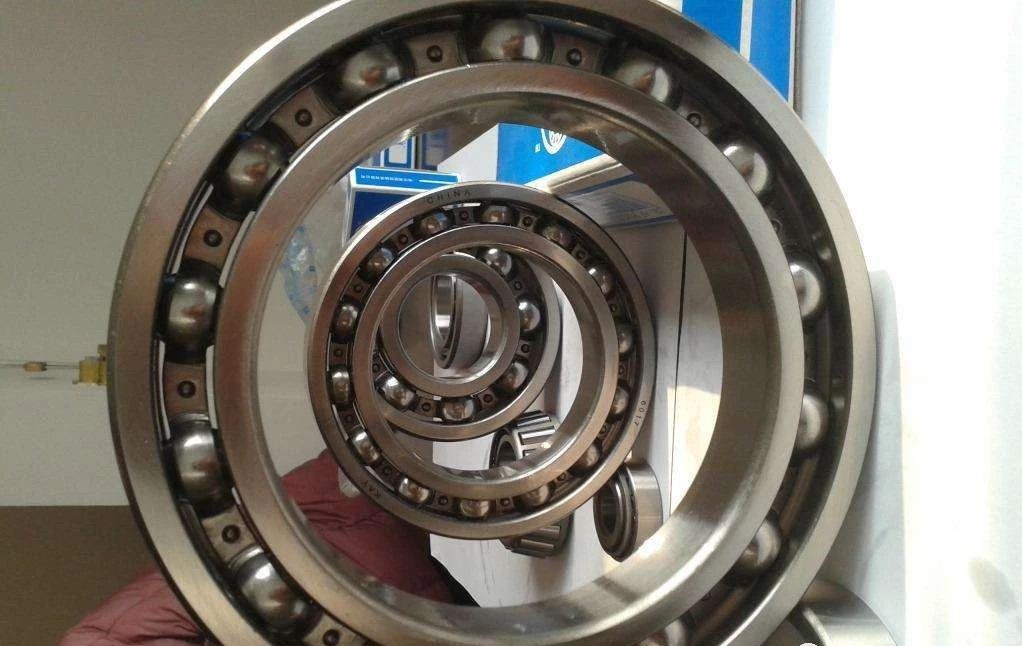The selection of bearing clearance and configuration is an extremely important part of motor design. If you do not know the performance of the bearing and choose a solution, it is likely to be a failed design. Different operating conditions will have different requirements for bearings. Ms. Shen believes that it is necessary to learn and discuss some knowledge about bearings.
Relationship between various clearances of deep groove ball bearings
The working clearance of bearings is calculated according to formula
(1). The selection of working clearance of bearings is theoretically the longest when the bearing is in stable operation and has a slightly negative working clearance.
△=△0-Δfi-δf0-δt+δw …………………(1)
In formula (1):
△0——Original clearance
Δfi——Clearance reduction caused by the fit between the inner ring and the shaft
δf0——Clearance reduction caused by the fit between the outer ring and the housing
δt——Clearance reduction caused by the temperature difference between the inner and outer rings
δw——Clearance increase caused by load
About bearing grease
The purpose of bearing lubrication is to separate the rolling element and the rolling surface with a thin oil film, and to form a uniform lubricating oil film on the rolling surface during operation, thereby reducing the internal friction of the bearing and the wear of each component and preventing sintering. Good lubrication is a necessary condition for the operation of bearings. Analysis of the causes of bearing damage shows that about 40% of bearing damage is related to poor lubrication. Lubrication methods are divided into grease lubrication and oil lubrication.
● Grease lubrication has the advantage that it does not need to be replenished for a long time after filling with grease once, and the sealing structure is relatively simple, so it is widely used. Grease is a semi-solid lubricant mixed with lubricating oil as the base oil and a solid thickener with strong lipophilicity. Various additives are also added to improve certain properties.
● Oil lubrication, often including circulating oil lubrication, jet lubrication, and oil mist lubrication. The lubricating oil of the bearing is generally based on refined mineral oil with good oxidation stability and rust resistance and high oil film strength, but various synthetic oils are also commonly used.
Motor bearing configuration
The bearing configuration of the rotating part of the motor (such as the main shaft) usually requires two sets of bearings to support and radially and axially locate the rotating part relative to the fixed part of the machine (such as the bearing seat). Depending on the application conditions, such as load, required rotational accuracy and cost requirements, the bearing configuration may include the following:
● Fixed and floating bearing configuration
● Pre-adjusted bearing configuration (fixed at both ends)
● “Floating” fine bearing configuration (floating at both ends)
Fixed and floating bearing configuration
The fixed end bearing is radially supported at one end of the shaft and axially located in both directions. Therefore, the fixed end bearing must be fixed to both the shaft and the bearing seat. Suitable bearings for use at the fixed end are radial bearings that can withstand combined loads, such as deep groove ball fine bearings, double-row or paired single-row angular contact ball bearings, self-aligning ball bearings, spherical and roller bearings or matched tapered roller bearings. Radial bearings that can only bear pure radial loads, such as cylindrical roller bearings with one ring without flange, can also be used at the fixed end when used in a group with another type of bearing (such as deep groove ball bearings, four-point contact ball bearings or double-direction thrust bearings, etc.). In this configuration, the other bearing is only used for axial positioning in two directions, and a certain radial degree of freedom must be left in the bearing seat (that is, a gap should be reserved with the bearing seat).
The floating end bearing only supports the shaft radially at the other end and must allow a certain axial displacement of the shaft so that there is no mutual force between the bearings. For example, when the bearing expands due to heat, axial displacement can be achieved inside some types of bearings. Axial displacement can occur between one of the bearing rings and the part it is connected to, preferably between the outer ring and the bearing seat hole.
There are many different combinations of bearing configurations for the fixed and floating ends. The following are some of the more commonly used combinations. For rigid bearing configurations, combinations that allow axial displacement to be achieved within the bearing should be used, such as:
(1) Deep groove ball shaft/cylindrical roller bearing
(2) Double row angular contact ball bearing/cylindrical roller bearing
(3) Paired single row tapered roller shaft/cylindrical roller bearing
(4) NUP cylindrical roller bearing/NU cylindrical roller bearing
(5) NU cylindrical roller bearing + four-point contact ball bearing/NU cylindrical roller bearing
For the above combinations, the angular error between the shaft and the bearing seat must be minimized. If the application does not allow, it is recommended to use a combination of self-aligning bearings that can withstand larger angular errors, such as:
(1) Self-aligning ball bearing/CARB toroidal roller bearing
(2) Spherical roller shaft/CARB toroidal roller bearing
These configurations can withstand certain angular errors and axial displacements and can avoid the generation of internal axial forces in the shaft system.
Post time: Aug-16-2024






